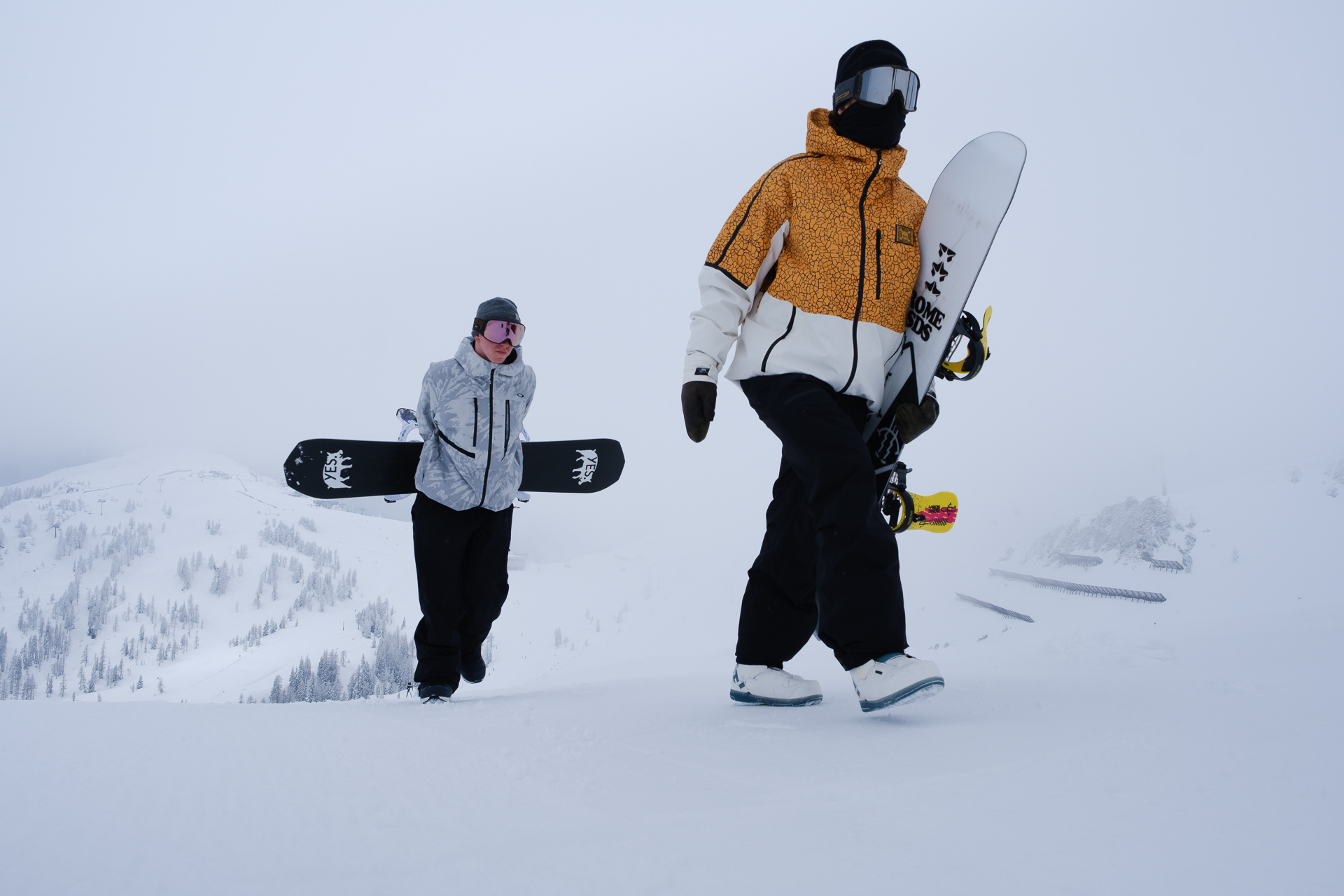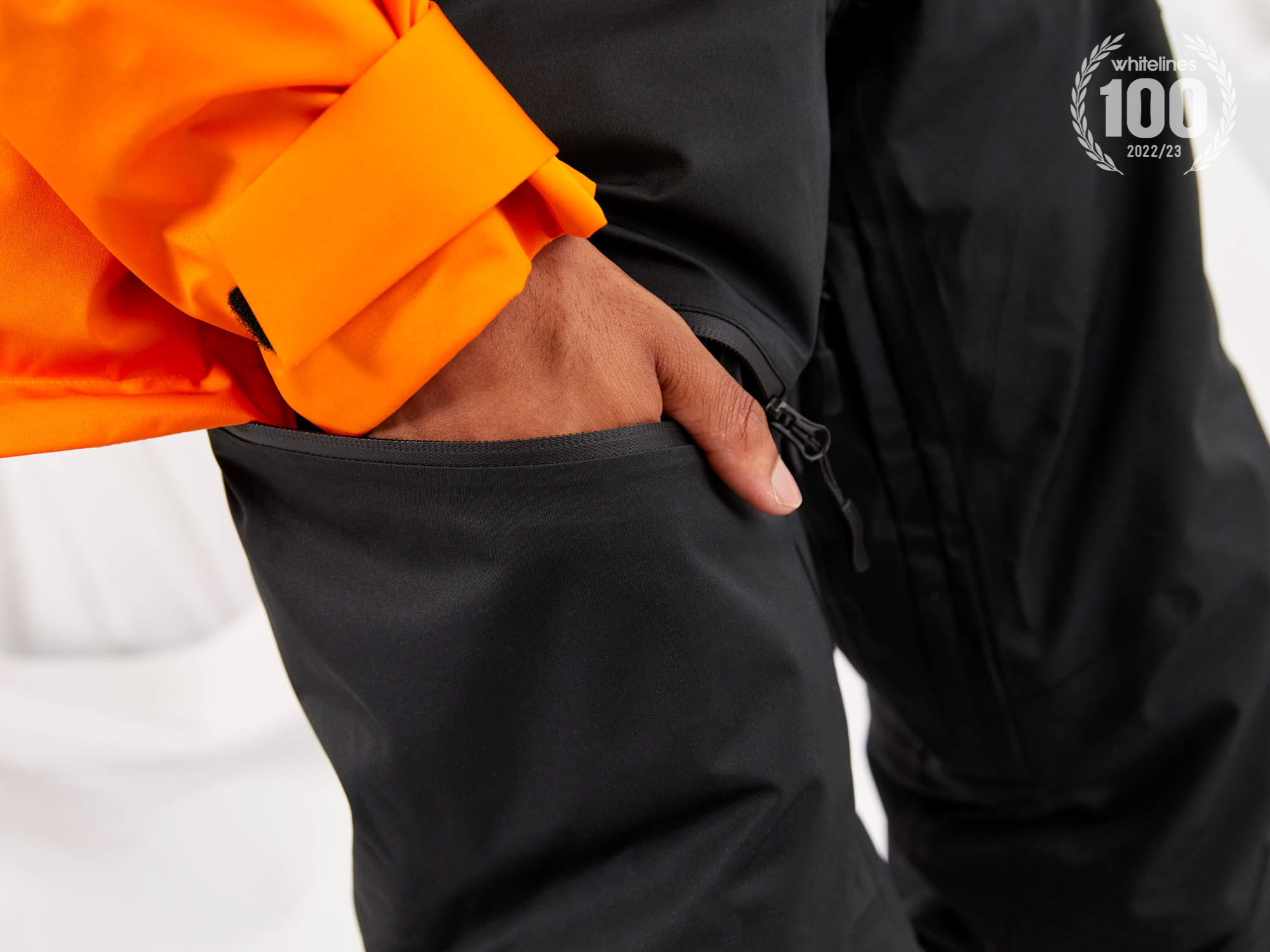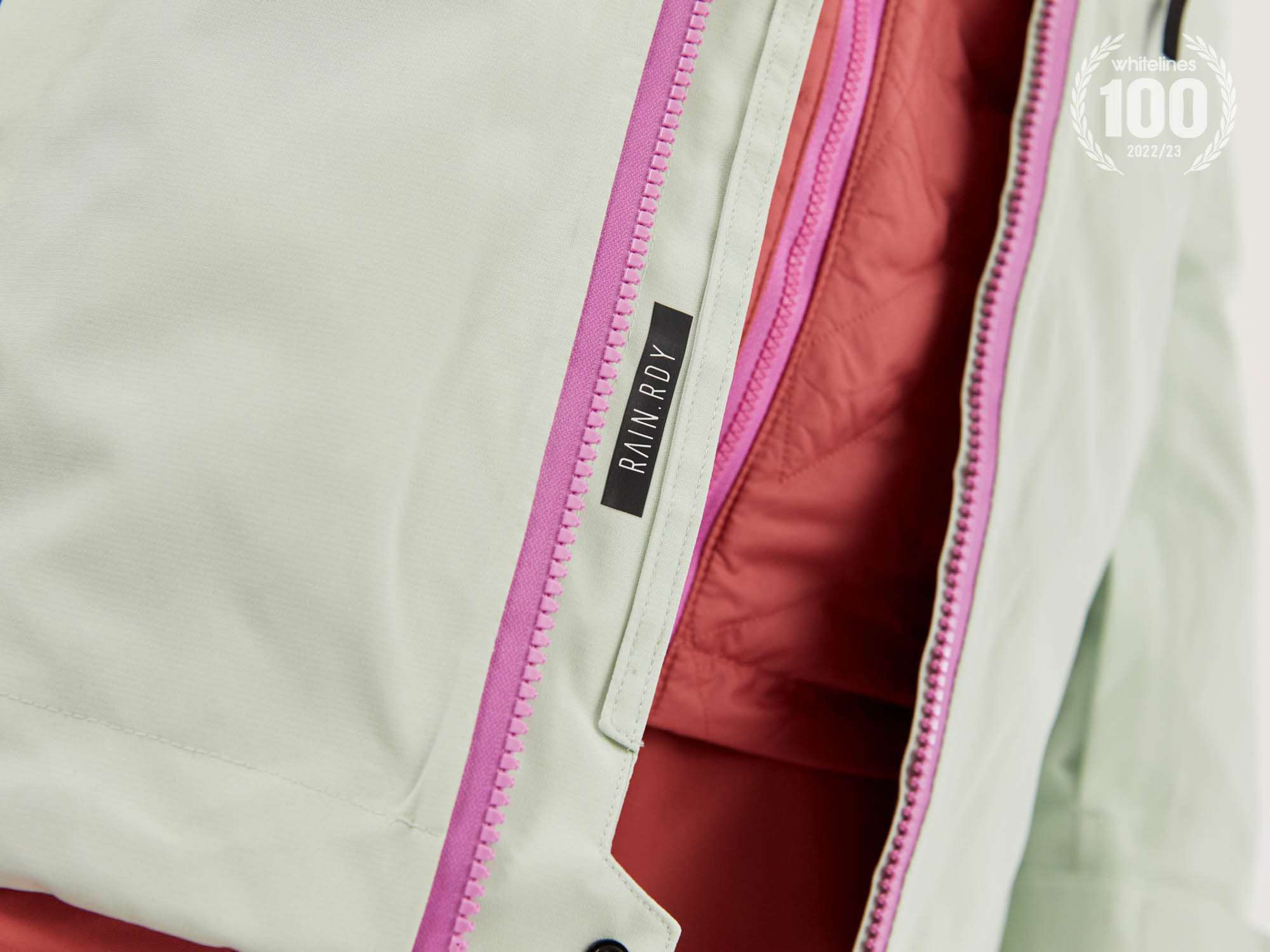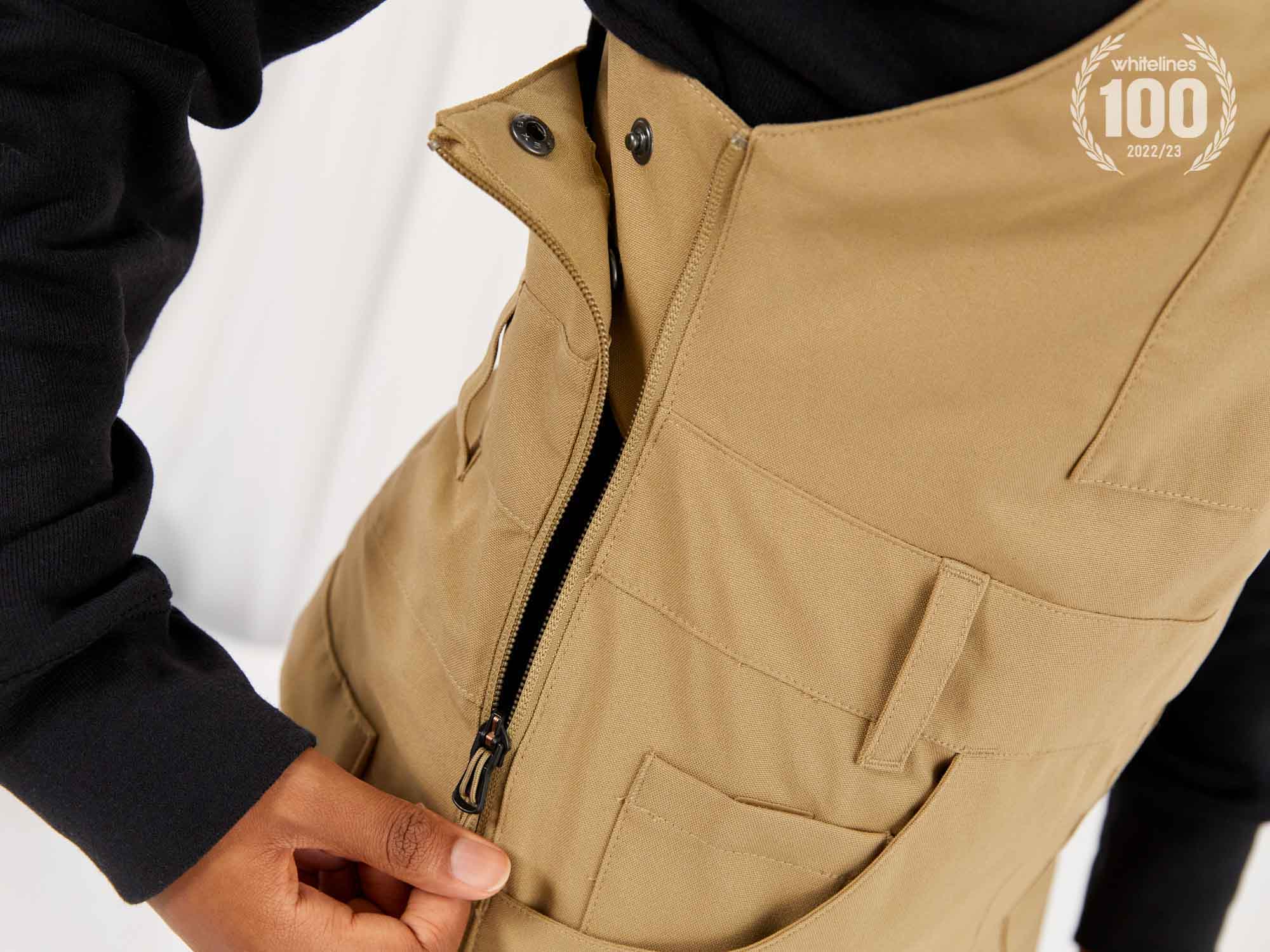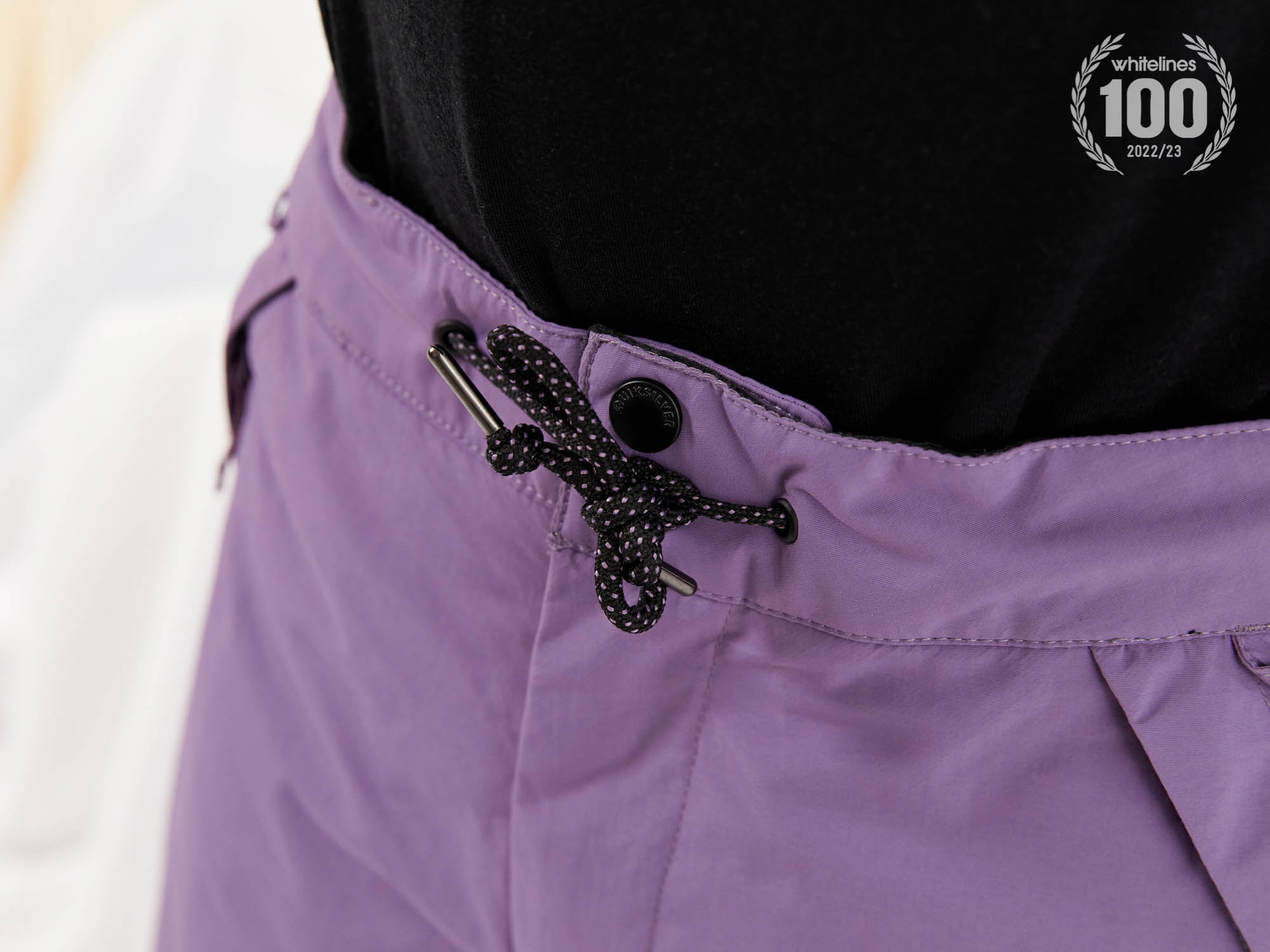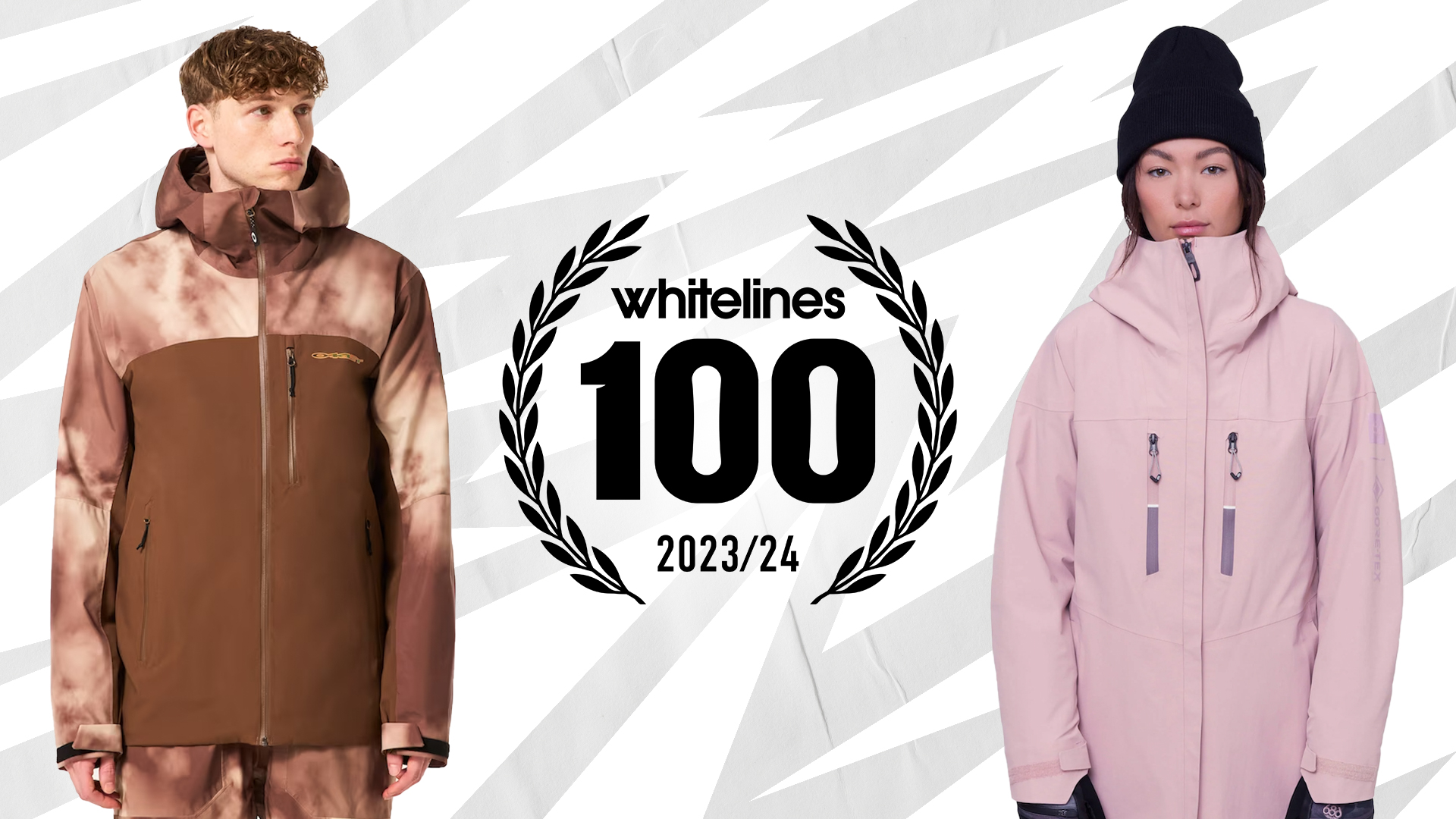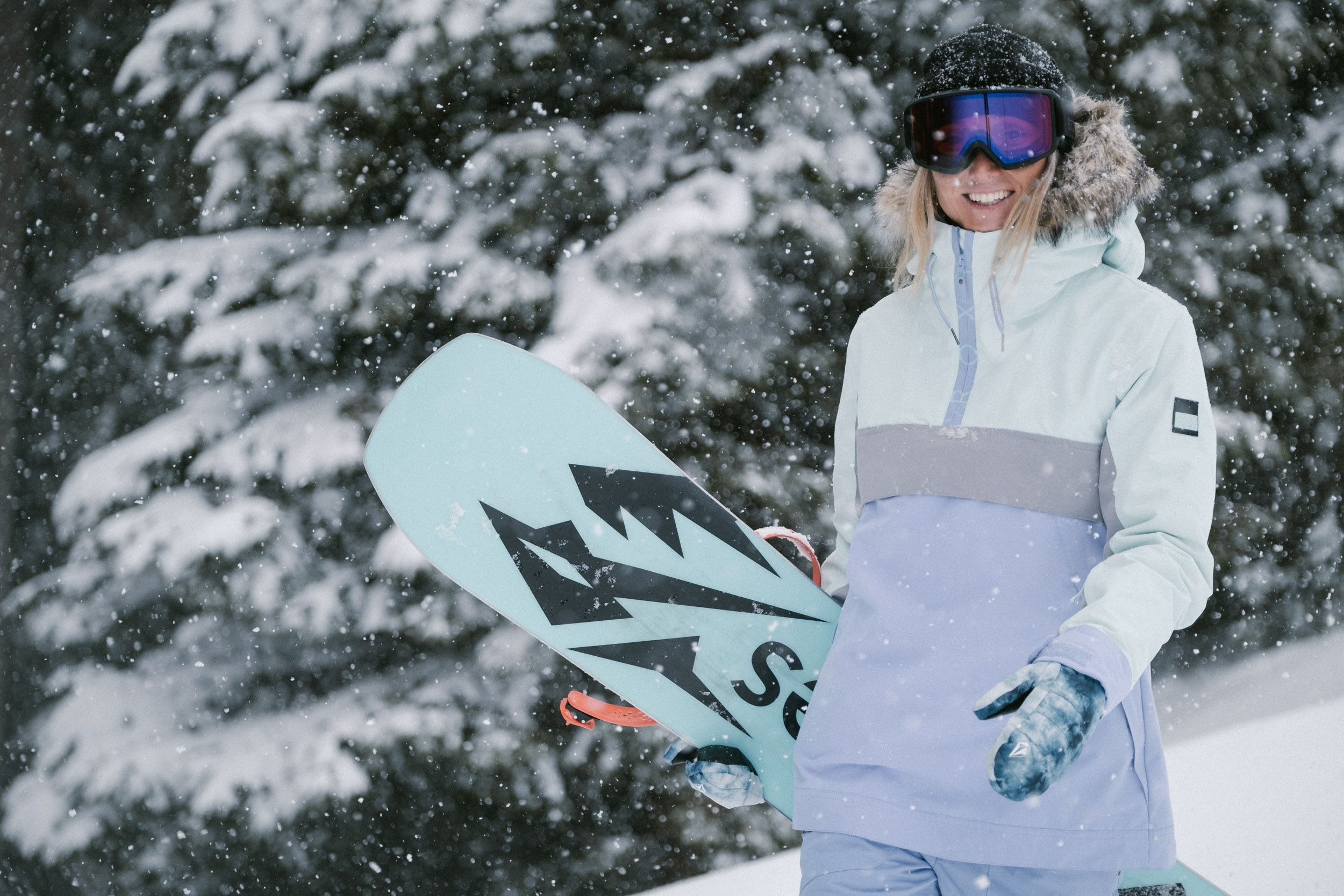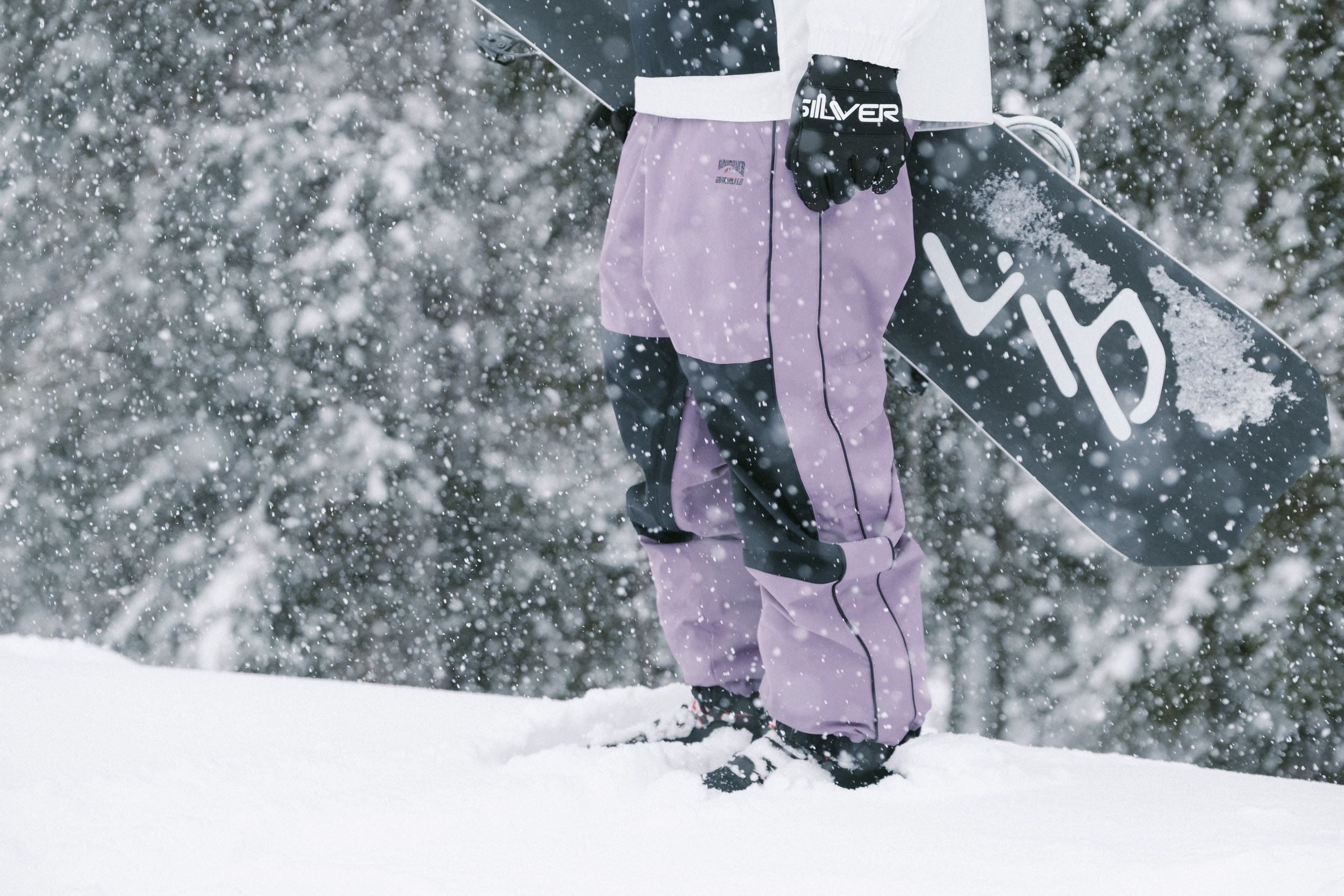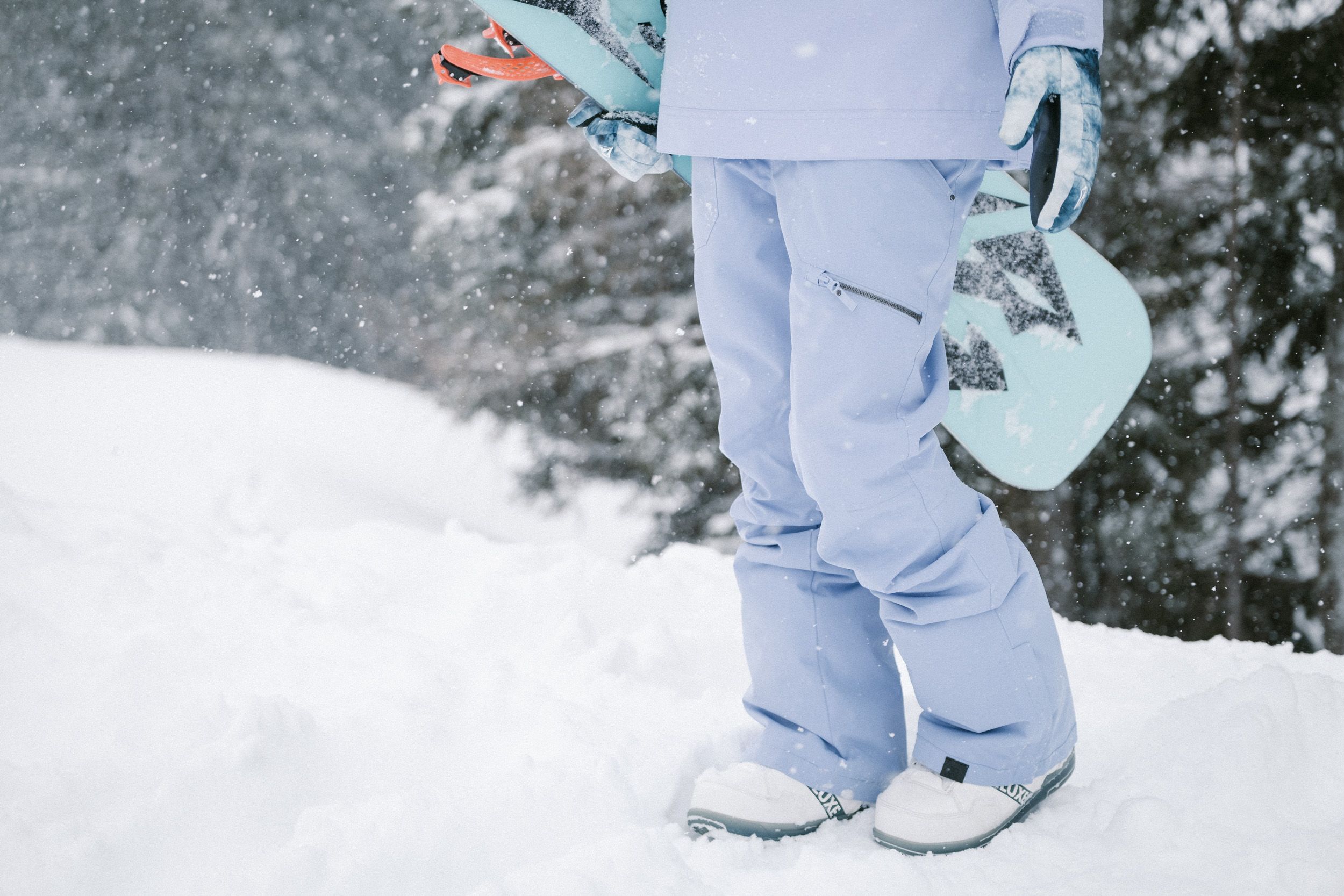Waterproofing and Breathability
Once you start to research snowboard outerwear, waterproofing and breathability are often the first technical terms you come across. This makes sense, when you think about it, as getting your turns in on a powder day wearing anything less than a waterproof jacket isn’t exactly ideal.
“Getting your turns in on a powder day wearing anything less than a waterproof jacket isn’t exactly ideal”
What’s important to remember is that it’s all a balancing act between being waterproof and being breathable. If something’s extremely waterproof but doesn’t have that breathability, you begin to sweat. In turn, this means your sweat will have nowhere to go and you’ll be soaked after only a couple of laps.
As living creatures, our body temperatures fluctuate throughout the day. With that in mind, maintaining a comfortable temperature can at times be tricky. In a nutshell, we want to avoid trapping moisture that may later freeze. This is why our snowboard jackets and pants have to have good breathability too.

When looking to buy a new snowboard jacket or a new pair snowboard pants, you want something that is both waterproof and breathable. Sometimes, however, a high waterproof rating means that you will need to compromise on the breathability (which isn’t always) ideal. This has become an equation many brands are eager to solve and, in recent years especially, a number of advancements have been made.
“As living creatures, our body temperatures fluctuate throughout the day”
The waterproof rating is measured in millimetres (mm). This refers to the depth of water that is required to penetrate the fabric (based on filling a one-inch diameter tube). The higher the rating, the more waterproof the outerwear.
If you’re someone who spends the majority of your time lapping the park, a 5k rated jacket is probably sufficient enough. A higher waterproof rating, however, becomes much more important if you’re planning on heading off into the backcountry. If this is your aim, you might want to steer your focus onto jackets with a minimum 20k waterproof rating. Of course, you’ll also want to factor in the jacket’s breathability in such a scenario as the backcountry can often require far more physical exertion.

Breathability is measured in grams. The ratings refer to the weight of water that can pass through a square metre of fabric in 24hours. Bear in mind though, that the testing protocols aren’t universal and can lack consistency between brands. Usually, you’ll find the breathability ratings to be somewhere between 5k and 20k – with the higher number being a more breathable option.
Last year, The North Face launched a new outerwear technology called Futurelight that they claim is the best option for breathable outerwear. For it, they’ve used a production process called nanospinning. This process creates nanosized fibres small enough for air permeability but too small for water to seep through, making the product both breathable and waterproof.
Unlike wine, the waterproof and breathability ratings on your outerwear do not get better with age. However, the cleaner you keep your outerwear the better the waterproofing / breathability will be. This is because dirt and oil compromise the full potential of both.



